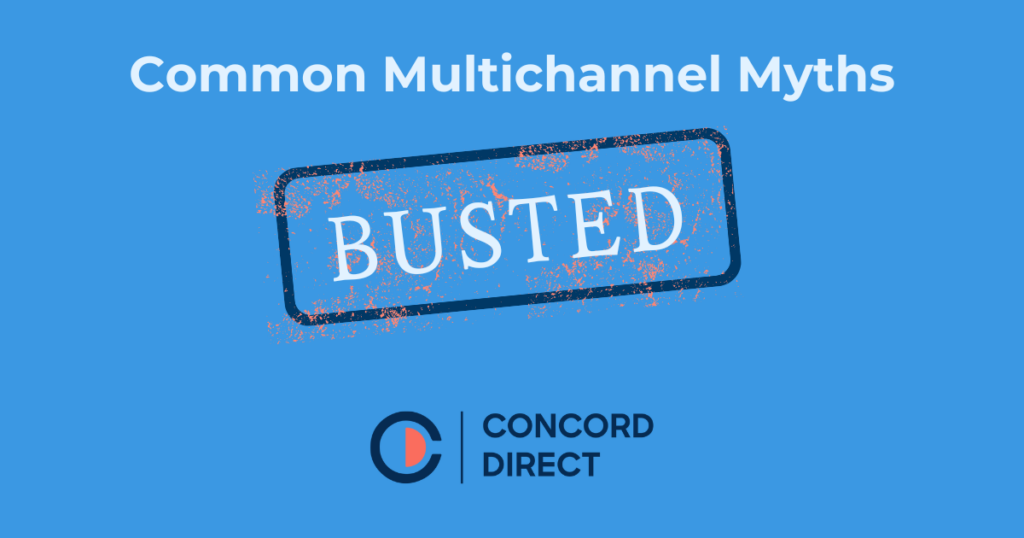You may have been told that multichannel strategies hold the key to solving your fundraising challenges. And while the benefits of multichannel marketing are many, misconceptions can limit organizations in their ability to harness the full potential of these approaches.
If you’ve struggled with planning and implementing true multichannel marketing campaigns for a more integrated program, read on. We aim to bust the many myths surrounding multichannel marketing—equipping you with knowledge to articulate a compelling case for how to invest in multiple channels and ultimately steering your organization toward enhanced donor engagement and increased fundraising success.
Myth #1 (this one’s a biggie!): Multichannel campaigns are too expensive.
Reality: Yes, the expense of allocating specific resources for multiple channels will likely add up to more than the cost of utilizing only one channel. However, this incremental cost can be justified by increased overall reach, engagement, and response. By including more audiences in their preferred channel, you’ll introduce and reinforce the offer several times and in several ways—thus expanding your messaging impact. And real-time monitoring of paid media, web, and email performance allows you to adjust spend as you go based on performance. One last bit of advice? Save on creative production costs with a consistent in-market evergreen paid media strategy rather than campaign-specific ads. An always-on evergreen approach gives ads time to build recall with the audiences, and also allows for more efficient spend.
Myth #2: Multichannel marketing always involves online and offline channels.
Reality: Generally, multichannel marketing encompasses several digital channels, and only sometimes traditional offline channels as well. This means a combination of online platforms—websites, email, social media—is key. They are interrelated based on how people access them, and having them support a common campaign is a huge advantage. Offline channels like direct mail, print advertising, and events require more significant budgets but could be effective based on target audience and the goals for the campaign (and program) as a whole. Before you get started, consider analyzing channel overlap of your file—meaning, how many people are interacting with multiple channels. The more knowledge you have about giving behaviors and channel preferences, the more targeted you can be with your approach and determining where and how to invest in channels.
Myth #3: Multichannel marketing is intrusive and repetitive with the same message—AKA annoying!
Reality: When executed strategically, multichannel marketing adds value to the donor experience. The key to success is to tailor the message and content to each channel and audience. Long gone are the days of simply copying and pasting your direct mail letter into an email template—but that doesn’t mean you can’t modify the content for other channels. For example, outer envelope teasers can be repurposed as subject lines or preview text. Images used in direct mail can be repurposed as email hero images, lightboxes, or web banners. Long-form direct mail copy can be parsed out and sent through multiple email touches, reiterating the call to action and creating a cohesive experience. To reach target audiences in their preferred channels with relevant content, just remember that every channel is unique and requires a customized approach with content framed to the strengths of that specific channel.
What are some of the myths you’re trying to overcome? Our experts can help you! Contact us today.

